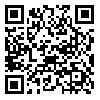Volume 5, Issue 3 (September 2018)
Health Spiritual Med Ethics 2018, 5(3): 36-43 |
Back to browse issues page
Download citation:
BibTeX | RIS | EndNote | Medlars | ProCite | Reference Manager | RefWorks
Send citation to:



BibTeX | RIS | EndNote | Medlars | ProCite | Reference Manager | RefWorks
Send citation to:
Kaboli R, Kiani Q. Mediatory Roles of Social Support and Self-Efficacy in the Relationship between Religious Orientation and Addiction Potential among Adolescents. Health Spiritual Med Ethics 2018; 5 (3) :36-43
URL: http://jhsme.muq.ac.ir/article-1-151-en.html
URL: http://jhsme.muq.ac.ir/article-1-151-en.html
1- Department of Psychology, Zanjan Branch, Islamic Azad University, Zanjan, Iran. , kherad739@yahoo.com
2- Department of Psychology, Zanjan Branch, Islamic Azad University, Zanjan, Iran
2- Department of Psychology, Zanjan Branch, Islamic Azad University, Zanjan, Iran
Abstract: (4959 Views)
Background and Objectives: The tendency to use drugs is a growing phenomenon, which is linearly increasing from early adolescence to early adulthood. This study aimed to determine the relationship between religious orientation and addiction potential with the mediatory roles of social support and self-efficacy among male adolescents in Zanjan Rood, Iran.
Methods: This descriptive and correlational study was conducted among all male high-school students of Zanjan Rood in the academic year of 2015-2016. In total, 181 subjects were selected based on single-stage cluster sampling. Data collection was carried out using Religious Orientation Scale by Allport, Philips Social Support Questionnaire, Sherer General Self-Efficacy Scale, and Addiction potential Scale (APS). In addition, data analysis was performed through structural equation modeling and path analysis by using SPSS version 20 and LISREL.
Results: In this research, the components of internal and external religious orientation, social support (family, friends, acquaintances, and total support), and self-efficacy had a significant impact on addiction potential of the participants. Moreover, social support and self-efficacy had a mediatory role in the relationship between religious orientation and addiction potential among adolescents. Evaluation of direct paths demonstrated that while the path of internal religion orientation had the highest effect on addiction potential (B=0.68, P<0.01), while in the indirect paths, the path of internal religious orientation to total social support and addiction potential had the highest impact (B=-0.34, P<0.05). On the other hand, paths mediated by self-efficacy had the lowest level of impact in this regard.
Conclusion: According to our results, it is suggested to implement interventions, especially among adolescents, to enhance religious orientation, social support, and self-efficacy, and in turn, lower the tendency to drug abuse among these individuals.
Methods: This descriptive and correlational study was conducted among all male high-school students of Zanjan Rood in the academic year of 2015-2016. In total, 181 subjects were selected based on single-stage cluster sampling. Data collection was carried out using Religious Orientation Scale by Allport, Philips Social Support Questionnaire, Sherer General Self-Efficacy Scale, and Addiction potential Scale (APS). In addition, data analysis was performed through structural equation modeling and path analysis by using SPSS version 20 and LISREL.
Results: In this research, the components of internal and external religious orientation, social support (family, friends, acquaintances, and total support), and self-efficacy had a significant impact on addiction potential of the participants. Moreover, social support and self-efficacy had a mediatory role in the relationship between religious orientation and addiction potential among adolescents. Evaluation of direct paths demonstrated that while the path of internal religion orientation had the highest effect on addiction potential (B=0.68, P<0.01), while in the indirect paths, the path of internal religious orientation to total social support and addiction potential had the highest impact (B=-0.34, P<0.05). On the other hand, paths mediated by self-efficacy had the lowest level of impact in this regard.
Conclusion: According to our results, it is suggested to implement interventions, especially among adolescents, to enhance religious orientation, social support, and self-efficacy, and in turn, lower the tendency to drug abuse among these individuals.
Type of Study: Original Article |
Subject:
Special
Received: 2016/12/23 | Accepted: 2018/02/13 | Published: 2019/06/10
Received: 2016/12/23 | Accepted: 2018/02/13 | Published: 2019/06/10
Send email to the article author
| Rights and permissions | |
 |
This work is licensed under a Creative Commons Attribution-NonCommercial 4.0 International License. |









